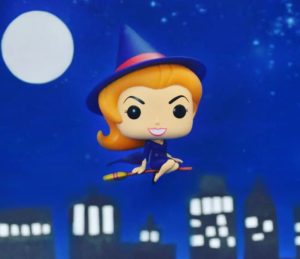Facts You Didn’t Know About the Salem Witches
2nd March 2023
Categorized Under: Myths and Legends from Around the World
Comments (0)
FACTS YOU DIDN’T KOW ABOUT THE SALEM WITCHES
It was a time of fear and suspicion when accusations of witchcraft could mean life or death. The year was 1692, and the small village of Salem, Massachusetts, was gripped by a hysteria that would come to be known as the Salem Witch Trials. No one was safe from the accusations that flew fast and furious, from the wealthiest to the poorest, from the most respected members of the community to the outcasts and the downtrodden. The trials were a harrowing time for all involved, and their legacy would be felt for centuries to come.
-
The Salem Witch Trials took place in Salem, Massachusetts, between February 1692 and May 1693.
-
The trials began when a group of young girls, including Betty Parris and Abigail Williams, accused several people of witchcraft.
-
Over 200 people were accused of witchcraft during the trials.
-
The trials resulted in the execution of 20 people, 19 of whom were hanged and one who was pressed to death.
-
Giles Corey, an elderly man, was crushed to death with stones when he refused to enter a plea in his trial.
-
The accused witches were mostly women, including some who were poor, widowed, or had a reputation for being “difficult.” although some men were also accused.
-
The trials were characterized by mass hysteria, superstition, and fear.
-
The first accusations of witchcraft were made by a group of young girls who claimed to be possessed by witches.
-
The accused were often forced to confess under extreme threats, harsh interrogations, and torture.
-
The trials were based on spectral evidence (testimony about apparitions or visions), which was the testimony of the accusers who claimed to see the spirits of the accused witches tormenting them in their dreams. They were not based on physical evidence.
-
The trials were ended by Governor William Phips, who declared that spectral evidence was no longer admissible in court.
-
The Salem Witch Trials have had a lasting impact on American culture and have been the subject of many books, movies, and TV shows.
-
The trials have also been a subject of historical research, with scholars attempting to understand the social, cultural, and psychological factors that led to the events in Salem.
-
The Salem Witch Trials had a lasting impact on American culture, inspiring many works of literature, film, and theater.
-
In 1957, Massachusetts formally apologized for the Salem Witch Trials and cleared the names of those who were accused and convicted.
As the dust settled and the trials came to a close, the people of Salem were left to pick up the pieces of their shattered community. The legacy of the trials would be felt for years to come, as families mourned the loss of loved ones and struggled to rebuild their lives. But despite the darkness that had descended upon the village, there were glimmers of hope and resilience. In the end, the Salem Witch Trials served as a reminder of the importance of fairness and justice in society, and of the dangers of succumbing to fear and hysteria. Though the scars of the trials would never fully heal, the people of Salem could take solace in the knowledge that they had emerged from the darkness stronger and wiser than before
@K I D S I N CO
Click here to read: The Trials of Salem: A Story of Fear and Justice



